Middle East and Africa

Turkey

Tunis

Egypt

Jebel Shammar

Nejd

Tripoli 11 The most commonly reported flag from the period. Flags with green, white and red stripes also seem to have been used. Probably flown exclusively on ships. The Turkish flag was the official national flag.

Morocco 22 Flown over the palace in Rabat and on ships. Military flags on land were often dectorated with a yellow or green octagram.

Muscat and Oman · Bahrain 33 Arab monarchies, especially those in and around the Gulf, flew plain red flags from their ships. These weren't quite "national flags" in the modern sense, but European powers tended to view them that way.

Ras al-Khaimah · Sharjah 44 Officially all of the Trucial States were supposed to fly a square red flag with a thick white border. In practice this flag became exclusively associated with the Al Qasimi dynasty. The other states mostly flew plain red flags.

Madagascar

Persia

Futa Jallon

Sokoto Caliphate
green flag of Islam 55 Flown by exclusively by the sultan as a symbol of religious authority. Not really a "national flag" as we'd understand it in modern terms. The sultan also gave white flags to his vassal emirs within the Caliphate.
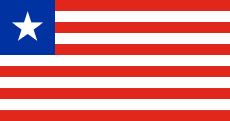
Liberia
Western Europe

France
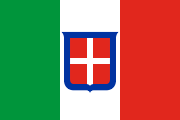
Sardinia
national flag 66 Flown by private citizens and merchant ships.

Sardinia
state flag 77 Flown by the government and navy.
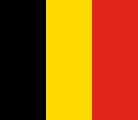
Belgium

Netherlands
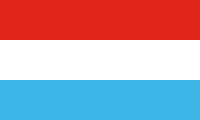
Luxembourg
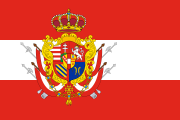
Tuscany

Modena and Reggio

Spain
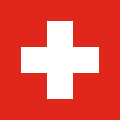
Switzerland
army flag 88 Flag of the federal army, treated as an unofficial national flag.

Denmark
merchant flag 99 Flown by merchant ships and the army. Private citizens were officially banned from flying the flag, but often did it anyway.

Denmark
sovereign flag 1010 Flown by the royal house, the government, and the armed forces. Also granted to a select list of private institutions and companies.

Norway
merchant flag 1111 Allowed to be flown by anyone. The union mark in the top-left corner of the flag was flown on its own as a joint diplomatic flag for Sweden and Norway.
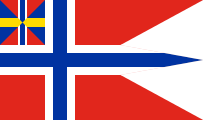
Norway
state flag 1212 Flown only on state-owned buildings and naval ships.

Sweden
merchant flag 1313 Allowed to be flown by anyone. The union mark in the top-left corner of the flag was flown on its own as a joint diplomatic flag for Sweden and Norway.

Sweden
war flag 1414 Flown on government buildings and by the military.

Greece
land flag 1515 Flown on land within Greece.

Greece
sea flag 1616 Flown at sea and abroad.
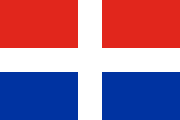
Samos
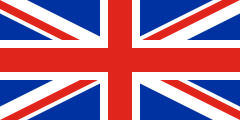
United Kingdom
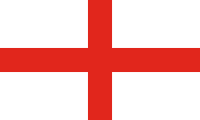
England

Scotland

Jersey

Monaco

Two Sicilies
state flag 1717 Flown by the government and navy.

Two Sicilies
land flag 1818 An alternate flag flown only on land.

San Marino

Papal States

Portugal

Malta
traditional flag 1919 Flown unofficially, mostly by civilian ships.

Andorra

Catalonia

Parma and Piacenza

Cornwall

Corsica
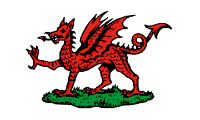
Wales

Ireland
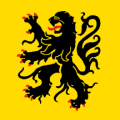
Flanders

Ionian Islands
German States

German Confederation

Prussia
royal flag 2020 Flown by the monarchy and government.

Prussia
merchant flag 2121 Flown by merchant ships.

Prussia
state colours 2222 The traditional heraldic colours of Prussia, often used as a flag on land.

Austria
Imperial colours 2323 The dynastic colours of the Hapsburg monarchy, often used as a flag on land.

Austria
naval flag 2424 Flown by merchant and navy ships.

Hesse-Darmstadt

Hesse-Kassel
state colours 2525 Designated as the official colours of Hesse. Not technically a national flag, but often used as one.

Hesse-Homburg
state colours 2626 Designated as the official colours of Hesse. Not technically a national flag, but often used as one.

Lübeck
state flag 2727 Flown by the government.

Lübeck
merchant flag 2828 Flown by merchant ships.
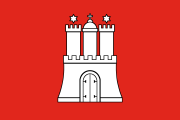
Hamburg

Frankfurt

Bremen 2929 The number of stripes could vary but eight was the most common.

Lippe
state colours 3030 Designated as the official colours of Lippe. Not technically a national flag, but often used as one.

Liechtenstein
princely flag 3131 Flown by the prince, and unofficially as a national flag.

Württemberg
state colours 3232 Designated as the official colours of Württemberg. Not technically a national flag, but often used as one. Black and yellow flags were also in use around this time.

Waldeck-Pyrmont

Reuss Elder Line
state colours 3333 Designated as the official colours of Reuss. Not technically a national flag, but often used as one.

Reuss Junior Line
state colours 3434 Designated as the official colours of Reuss. Not technically a national flag, but often used as one.

Saxe-Weimar-Eisenach
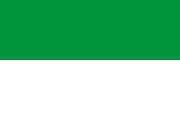
Saxon Duchies
state colours 3535 Designated as the official colours of the Ernestine duchies in Thuringia: Saxe-Altenburg, Saxe-Meiningen, and Saxe-Coburg-Gotha. Not technically a national flag, but often used as one.

Anhalt
state colours 3636 Designated as the official colours of the Anhalt duchies: Anhalt-Bernburg, Anhalt-Dessau, and Anhalt-Köthen. Not technically a national flag, but often used as one.
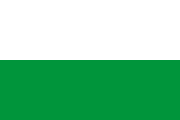
Saxony
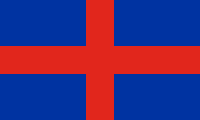
Oldenburg

Bavaria
state colours 3737 Designated as the official colours of Bavaria. Not technically a national flag, but often used as one. There are many reported variants from the period, some with more stripes, others with the diamond pattern from the Bavarian arms.

Schwarzburg-Rudolstadt
state colours 3838 Designated as the official colours of Schwarzburg. Not technically a national flag, but often used as one.

Schwarzburg-Sondershausen
state colours 3939 Designated as the official colours of Schwarzburg. Not technically a national flag, but often used as one.
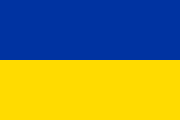
Brunswick
state colours 4040 Designated as the official colours of Brunswick. Not technically a national flag, but often used as one.

Nassau

Hanover
merchant flag 4141 Flown by merchant ships.
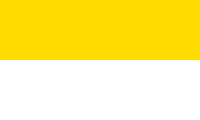
Hanover
state colours 4242 Designated as the official colours of Hanover. Not technically a national flag, but often used as one.

Heligoland
Eastern Europe

Russia
Imperial standard 4343 The flag of the Emperor, often regarded as the Russian national flag during the period.

Russia
trade flag 4444 Flown by merchant ships.
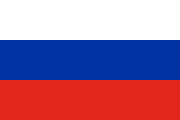
Carniola
national colours 4545 Designated as the official colours of the Austrian crown land of Carniola. Regarded as the unofficial national flag of Slovenia.

Slovakia 4646 Flown by advocates of Slovakian independence. The "Upper Hungary" region did not have an official flag.

Serbia
national flag 4747 Allowed to be flown by anyone.

Serbia
state flag 4848 Flown the government and armed forces.

Croatia and Slavonia 4949 The flying of the Croatian tricolour was banned within Austria.

Hungary 5050 Prohibited within the Austrian Empire but still flown by Hungarian nationalists.

Romania 5151 Flown by advocates of Romanian independence and unification.

Moldavia
merchant flag 5252 Flown by rivergoing merchant vessels.

Wallachia
merchant flag 5353 Flown by rivergoing merchant vessels.
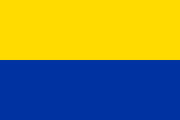
Ukraine 5454 Flown by Ukrainian nationalists. The order of colours wasn't fixed.
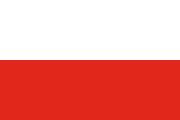
Bohemia
state colours 5555 Designated as the official colours of the Austrian crown land of Bohemia. Not an official flag, but informally regarded as a Czech national symbol. A white flag with the Bohemian coat of arms was also sometimes used.

Poland
banner 5656 The former royal banner of Poland, no longer official but still used as an informal national symbol.

Circassia
South Asia and the Indian Ocean

Hyderabad

Jammu and Kashmir 5757 The maharaja's flag had yellow stripes at the top and bottom.

Oudh

Jhabua 5858 The raja's flag was rectangular

Dewas

Kota
princely flag 5959 Flown by the Maharao and also used as a state flag. The flag was sometimes much longer.

Nepal 6060 Nepal's flag started as two pennants which were flown together: the top one representing the king, and the bottom one representing the hereditary prime minister.

Maldive Islands

Kishangarh

Sailana

Ajaigarh 6161 The reverse side of the flag showed a moon and a flower.

Mewar 6262 Mewar had a number of reported princely banners which were also sometimes used as state flags. The most common one had a large yellow sun and a blue katar dagger.

Porbandar
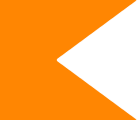
Kolhapur 6363 Kolhapur flew the Maratha saffron banner as a state flag. The maharaja had a diagonally-divided red and orange flag.

Nagpur 6464 Nagpur flew the Maratha saffron banner as a state flag.

Jaipur

Alwar

Idar

Sirohi

Jodhpur

Gwalior
princely flag 6565 Flag of the maharaja, also used as a state flag. Plain saffron flags were also sometimes flown.

Jaisalmer

Bikaner

Banswara

Arcot

Dholpur

Rajpipla
princely flag 6666 Flown by the maharaja and often used as a state flag.

Rajpipla
national flag 6767 Allowed to be flown by civilians.

Indore 6868 Inland river boats flew a triangular pennant in the same colours.

Kalat

Travancore

Manipur

Rajgarh

Sitamau 6969 The Raja's flag had a red sun

Bundi

Alirajpur
Southeast Asia

Siam
state flag 7070 Flown by the government.

Siam
merchant flag 7171 Flown by merchant ships.

Luang Prabang
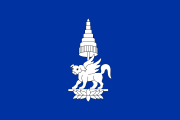
Champassak

Burma

Johor · Kelantan · Perak · Terengganu 7272 Malay monarchs often flew plain white flags. These standards eventually evolved into individual state flags as more colours and symbols were added.

Jambi
sultan's flag 7373 Flown by the sultan and by naval ships.
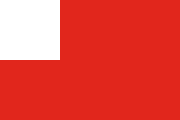
Jambi
nobles' flag 7474 Flown by nobles at sea.

Jambi
merchant flag 7575 Flown by commoner merchants at sea.

Brunei
sultan's flag 7676 Flown by the sultan and also used as an unofficial state flag.

Deli
sultan's flag 7777 Flown by the sultan and also used as an unofficial state flag.

Sarawak

Kedah

Aceh
national flag 7878 Flown by the government, particularly at sea, as a way of nominally invoking the protection of the Ottoman Empire.
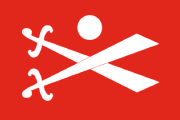
Aceh
sultan's flag 7979 Flown by the sultan and by warships. There are many other reported flags from the era, and it's not clear exactly how they were all used. Merchant ships often flew a plain red flag.

Asahan

Sulu 8080 Reported flag from this era. It's exact use isn't known.
Oceania

Tahiti

Huahine

Raʻiatea
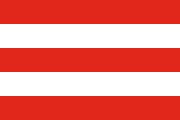
Bora Bora

Tahuata

Mangareva

Hawaiʻi

Australia

New Zealand 8181 The former flag of the United Tribes of New Zealand, which remained in use as an unofficial symbol of the country.

ʻUvea
North America

United States

Texas

Métis
Latin America

Brazil
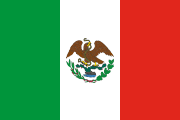
Mexico

Peru
national ensign 8282 Flown by the government, the navy, the national police, and national sports teams. Raised at major ceremonies. The army uses a similar flag with a different coat of arms.

Peru
national flag 8383 Allowed to be flown by anyone.

New Granada
war flag 8484 Flown on warships, fortresses, public buildings, and by diplomats abroad.

New Granada
merchant flag 8585 Flown by merchant ships.

Ecuador

Uruguay

Argentina · Buenos Aires

Honduras · Nicaragua · Salvador

Paraguay
front side

Paraguay
back side

Guatemala
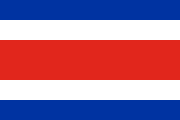
Costa Rica
national flag 8686 The most common Costa Rican flag. Officially designated for private citizens, but in practice often used on government buildings and schools too.

Costa Rica
national ensign 8787 Flown by the government and by diplomatic missions, although also used sometimes by private citizens.

Cuba 8888 Flown by Cuban nationalists and revolutionaries who sought independence from Spain.

Haiti

Dominican Republic

Chile

Venezuela
national ensign 8989 Flown by the government and armed forces.

Venezuela
national flag 9090 Allowed to be flown by anyone.

Bolivia
state flag 9191 Flown by the government and armed forces.

Bolivia
national flag 9292 Allowed to be flown by anyone.
Events of 1852
ARGENTINA • At the Battle of Caseros on February 3, Juan Manuel de Rosas was defeated and forced into exile by Justo José de Urquiza and the Grand Army. Urquiza was made Provisional Director of the Argentine Confederation and the original light blue flag was restored.



Buenos Aires, fearing a loss of economic and political power, rejected the new constitutional arrangement. It seceded on September 11, but continued flying the same flag.
CROATIA • The Croatian tricolour was banned by Austrian authorities on March 8. It remained the preferred nationalist symbol.

LIPPE • Lippe adopted a flag around 1852.

Notes
1 The most commonly reported flag from the period. Flags with green, white and red stripes also seem to have been used. Probably flown exclusively on ships. The Turkish flag was the official national flag. ↩
2 Flown over the palace in Rabat and on ships. Military flags on land were often dectorated with a yellow or green octagram. ↩
3 Arab monarchies, especially those in and around the Gulf, flew plain red flags from their ships. These weren't quite "national flags" in the modern sense, but European powers tended to view them that way. ↩
4 Officially all of the Trucial States were supposed to fly a square red flag with a thick white border. In practice this flag became exclusively associated with the Al Qasimi dynasty. The other states mostly flew plain red flags. ↩
5 Flown by exclusively by the sultan as a symbol of religious authority. Not really a "national flag" as we'd understand it in modern terms. The sultan also gave white flags to his vassal emirs within the Caliphate. ↩
6 Flown by private citizens and merchant ships. ↩
7 Flown by the government and navy. ↩
8 Flag of the federal army, treated as an unofficial national flag. ↩
9 Flown by merchant ships and the army. Private citizens were officially banned from flying the flag, but often did it anyway. ↩
10 Flown by the royal house, the government, and the armed forces. Also granted to a select list of private institutions and companies. ↩
11 Allowed to be flown by anyone. The union mark in the top-left corner of the flag was flown on its own as a joint diplomatic flag for Sweden and Norway. ↩
12 Flown only on state-owned buildings and naval ships. ↩
13 Allowed to be flown by anyone. The union mark in the top-left corner of the flag was flown on its own as a joint diplomatic flag for Sweden and Norway. ↩
14 Flown on government buildings and by the military. ↩
15 Flown on land within Greece. ↩
16 Flown at sea and abroad. ↩
17 Flown by the government and navy. ↩
18 An alternate flag flown only on land. ↩
19 Flown unofficially, mostly by civilian ships. ↩
20 Flown by the monarchy and government. ↩
21 Flown by merchant ships. ↩
22 The traditional heraldic colours of Prussia, often used as a flag on land. ↩
23 The dynastic colours of the Hapsburg monarchy, often used as a flag on land. ↩
24 Flown by merchant and navy ships. ↩
25 Designated as the official colours of Hesse. Not technically a national flag, but often used as one. ↩
26 Designated as the official colours of Hesse. Not technically a national flag, but often used as one. ↩
27 Flown by the government. ↩
28 Flown by merchant ships. ↩
29 The number of stripes could vary but eight was the most common. ↩
30 Designated as the official colours of Lippe. Not technically a national flag, but often used as one. ↩
31 Flown by the prince, and unofficially as a national flag. ↩
32 Designated as the official colours of Württemberg. Not technically a national flag, but often used as one. Black and yellow flags were also in use around this time. ↩
33 Designated as the official colours of Reuss. Not technically a national flag, but often used as one. ↩
34 Designated as the official colours of Reuss. Not technically a national flag, but often used as one. ↩
35 Designated as the official colours of the Ernestine duchies in Thuringia: Saxe-Altenburg, Saxe-Meiningen, and Saxe-Coburg-Gotha. Not technically a national flag, but often used as one. ↩
36 Designated as the official colours of the Anhalt duchies: Anhalt-Bernburg, Anhalt-Dessau, and Anhalt-Köthen. Not technically a national flag, but often used as one. ↩
37 Designated as the official colours of Bavaria. Not technically a national flag, but often used as one. There are many reported variants from the period, some with more stripes, others with the diamond pattern from the Bavarian arms. ↩
38 Designated as the official colours of Schwarzburg. Not technically a national flag, but often used as one. ↩
39 Designated as the official colours of Schwarzburg. Not technically a national flag, but often used as one. ↩
40 Designated as the official colours of Brunswick. Not technically a national flag, but often used as one. ↩
41 Flown by merchant ships. ↩
42 Designated as the official colours of Hanover. Not technically a national flag, but often used as one. ↩
43 The flag of the Emperor, often regarded as the Russian national flag during the period. ↩
44 Flown by merchant ships. ↩
45 Designated as the official colours of the Austrian crown land of Carniola. Regarded as the unofficial national flag of Slovenia. ↩
46 Flown by advocates of Slovakian independence. The "Upper Hungary" region did not have an official flag. ↩
47 Allowed to be flown by anyone. ↩
48 Flown the government and armed forces. ↩
49 The flying of the Croatian tricolour was banned within Austria. ↩
50 Prohibited within the Austrian Empire but still flown by Hungarian nationalists. ↩
51 Flown by advocates of Romanian independence and unification. ↩
52 Flown by rivergoing merchant vessels. ↩
53 Flown by rivergoing merchant vessels. ↩
54 Flown by Ukrainian nationalists. The order of colours wasn't fixed. ↩
55 Designated as the official colours of the Austrian crown land of Bohemia. Not an official flag, but informally regarded as a Czech national symbol. A white flag with the Bohemian coat of arms was also sometimes used. ↩
56 The former royal banner of Poland, no longer official but still used as an informal national symbol. ↩
57 The maharaja's flag had yellow stripes at the top and bottom. ↩
58 The raja's flag was rectangular ↩
59 Flown by the Maharao and also used as a state flag. The flag was sometimes much longer. ↩
60 Nepal's flag started as two pennants which were flown together: the top one representing the king, and the bottom one representing the hereditary prime minister. ↩
61 The reverse side of the flag showed a moon and a flower. ↩
62 Mewar had a number of reported princely banners which were also sometimes used as state flags. The most common one had a large yellow sun and a blue katar dagger. ↩
63 Kolhapur flew the Maratha saffron banner as a state flag. The maharaja had a diagonally-divided red and orange flag. ↩
64 Nagpur flew the Maratha saffron banner as a state flag. ↩
65 Flag of the maharaja, also used as a state flag. Plain saffron flags were also sometimes flown. ↩
66 Flown by the maharaja and often used as a state flag. ↩
67 Allowed to be flown by civilians. ↩
68 Inland river boats flew a triangular pennant in the same colours. ↩
69 The Raja's flag had a red sun ↩
70 Flown by the government. ↩
71 Flown by merchant ships. ↩
72 Malay monarchs often flew plain white flags. These standards eventually evolved into individual state flags as more colours and symbols were added. ↩
73 Flown by the sultan and by naval ships. ↩
74 Flown by nobles at sea. ↩
75 Flown by commoner merchants at sea. ↩
76 Flown by the sultan and also used as an unofficial state flag. ↩
77 Flown by the sultan and also used as an unofficial state flag. ↩
78 Flown by the government, particularly at sea, as a way of nominally invoking the protection of the Ottoman Empire. ↩
79 Flown by the sultan and by warships. There are many other reported flags from the era, and it's not clear exactly how they were all used. Merchant ships often flew a plain red flag. ↩
80 Reported flag from this era. It's exact use isn't known. ↩
81 The former flag of the United Tribes of New Zealand, which remained in use as an unofficial symbol of the country. ↩
82 Flown by the government, the navy, the national police, and national sports teams. Raised at major ceremonies. The army uses a similar flag with a different coat of arms. ↩
83 Allowed to be flown by anyone. ↩
84 Flown on warships, fortresses, public buildings, and by diplomats abroad. ↩
85 Flown by merchant ships. ↩
86 The most common Costa Rican flag. Officially designated for private citizens, but in practice often used on government buildings and schools too. ↩
87 Flown by the government and by diplomatic missions, although also used sometimes by private citizens. ↩
88 Flown by Cuban nationalists and revolutionaries who sought independence from Spain. ↩
89 Flown by the government and armed forces. ↩
90 Allowed to be flown by anyone. ↩
91 Flown by the government and armed forces. ↩
92 Allowed to be flown by anyone. ↩